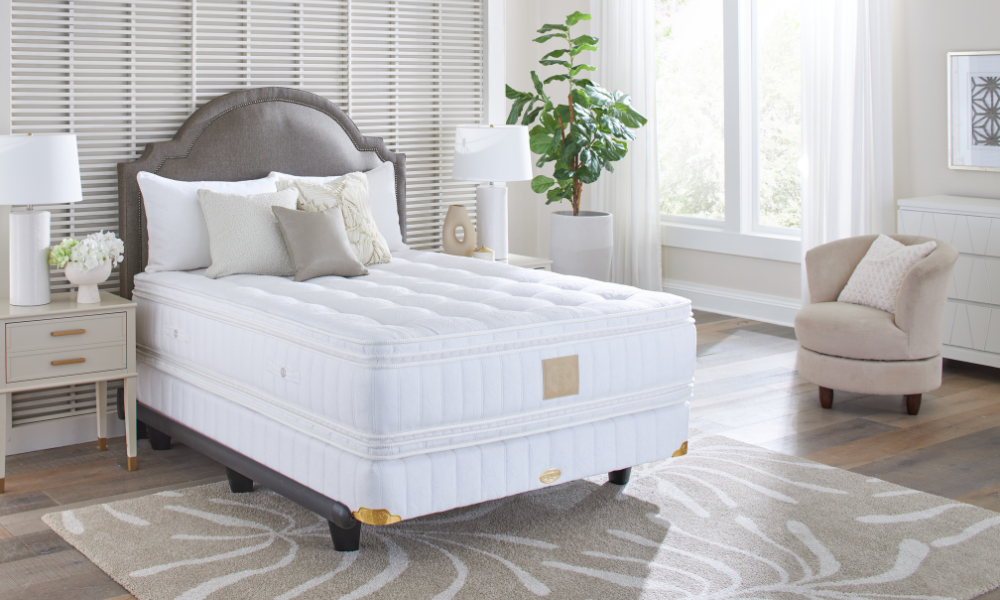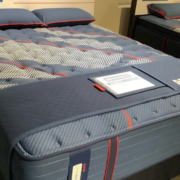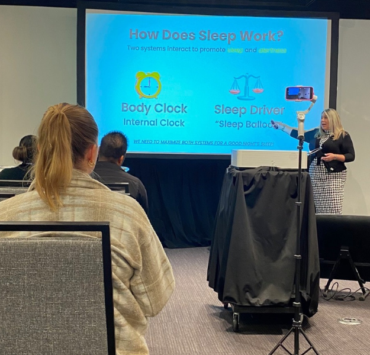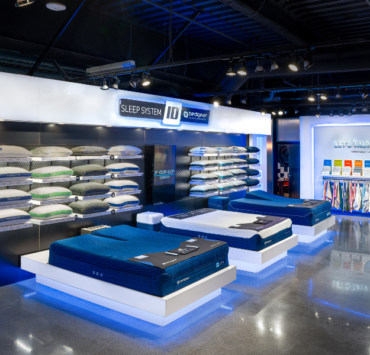What is luxury in the mattress industry? At what price point does luxury start? Should a $2,000 mattress and a $10,000 mattress be lumped into the same category?
These are questions the industry should be asking itself as the luxury category continues to prove successful for retailers and manufacturers.
Reaching out to industry members, many agree that the luxury category was previously defined by a product priced at $2,000 and up. However, the story has changed today.
“Everything has become so inflated over the years,” says Spring Air CEO Nick Bates. “I don’t even consider $3,000 mattresses to be luxury. For instance, our high-end Chattam & Wells line goes from $4,899 to $7,899. I’d start luxury at $4,000 and go up to $10,000.”
At King Koil, David Binke says the company internally designates $2,000 to $4,500 as ultra-premium and then luxury in the $5,000 category and up. “We stop at $7,500, but we’re contemplating going higher next year,” he adds.
“Luxury is a slow transformation for our industry because people want to hold on to products that bring in traffic, so if you go to a typical sleep show there are 40 beds on the floor, and you’ll have well over half now that are $2,000 and above,” Binke continues. “Five years ago it might be a dozen beds. It’s a transition because of what the manufacturers are producing and what it costs to do business now — things are just more expensive.”
Richard Fleck, president of Paramount Sleep, says the company created a matrix of all luxury price points back in 2015 and found the average luxury product came in at $4,999.
Today, he feels luxury should start in the $3,000-$4,000 range.
The $2,000 range is standard product pricing today, so I don’t see that as a luxury price point anymore,” he says. “The average consumer is willing to spend $1,350 for a queen mattress. Our bestselling luxury products are in the $5,000 range for a queen.”
Fleck explains that several things go into making a product luxury.
“Luxury products are made differently with unique raw materials,” Fleck says. “Exclusivity is also a huge part of luxury, and the brand is important as well. It has to have a brand story that resonates with the consumer. And, of course, the quality story has to play into it. Handcrafted side stitching is a big part of what we do in our luxury products, which is not available on machine-made beds, and that gives us a story to tell. Those are the four pillars we lean on at Paramount. And you have to have all four touch points in a high-end luxury product or else you’re going to fail the promise to the consumer that you’re selling luxury.”
Bill Hammer, president of Shifman Mattress, shares that he’s been using certain terminology to break up the price points when talking to retail customers.
“From $2,000 to $4,000 there’s a lot of business, but those are what I’d call premium products,” he explains. “From $4,000 to $8,000 I call ultra-premium, and then anything above that is ultra-luxury. One of the phrases I use often is real luxury.”
Hammer says that being built with natural materials and crafted by artisans who have been doing it for generations is important to the meaning of luxury, but that it goes beyond just the details.
“It’s the way the product feels and the quality of sleep that it provides that, in my mind, make a mattress a true luxury product,” he says. “I do believe that there should be levels to luxury and categories that help define them. But there’s no one that can be an enforcer of that, so it’s something we will continue to do internally.”
Bates adds that looking solely at price when it comes to luxury is very simplistic and that there have been tech-focused mattresses that have high price points but are not luxury beds. He also doesn’t think there’s any way to categorize luxury on an industrywide scale.
“The leaders of the industry are going to label those segments however they want, with the marketing dollars driving the industry to say what price points are considered luxury,” he says.
Kurt Ling, principal at Posh+Lavish, has a bit of a different take.
“Luxury is in almost every product category, and I don’t think we bedmakers get to decide what luxury makes luxury different in mattresses compared with other categories consumers purchase,” Ling says. “What is true for luxury in all categories is pretty much true for the mattress industry and then, we can drill down to the specifics. All that to say, what is mostly true about luxury in all sorts of product categories is more true than anything we want to say that it is or believe. What is premium, ultra-premium or luxury, and what are their price points? We are talking to ourselves. For mattress consumers, there are “good enough” lower price point mattresses, and then there are “mass-produced” midprice-point mattresses, followed by more unique ‘specialty mattresses,’ which are more expensive and then there are luxury mattresses. Luxury is just ‘wow.’”
He says the key to luxury is storytelling and that it has to be meaningful to be believed.
“Luxury products do not sell themselves until they reach a tipping point or fandom,” Ling says. “Louis Vuitton trunks and Hermes scarves have passed a brand tipping point in luxury. I don’t think a mattress brand has yet. The luxury story in many categories outside of fashion is almost always better performance. In the mattress category, without a doubt, it is unique, supreme comfort and long life. Expensive mattresses have to be decadently comfortable and last longer than their less expensive counterparts.”
We may never agree on the exact price points that define luxury, but that’s OK because luxury is much more important than simply the price and each manufacturer is going to define it and sell it in the way that works best for them — by promoting quality, branding, an exclusive story and unique materials.




